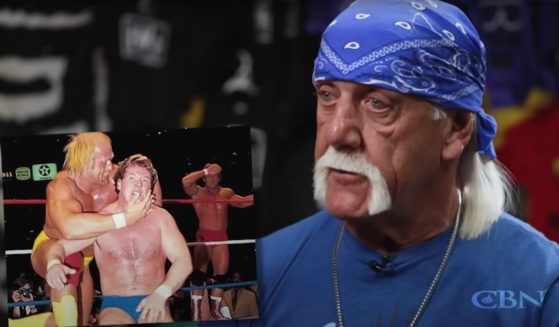Arizona Prepares to Make Gas Chamber 'Operable' Again, Drawing Criticism from Anti-Death Penalty Advocates
As it aims to resume executions after a seven-year hiatus, Arizona has refurbished its gas chamber, where the nation’s last lethal-gas execution was carried out more than two decades ago before the United States rejected the brutal nature of the deaths.
The state has purchased materials to make hydrogen cyanide gas, which was used in some past U.S. executions and which the Nazis used to kill 865,000 Jews at the Auschwitz concentration camp alone.
The secret refurbishment late last year at the prison in Florence, southeast of Phoenix, is drawing criticism from some as a cruel approach to punishment that is out of touch with modern sensibilities.
“Whether or not one supports the death penalty as a general matter, there is general agreement in American society that a gas devised as a pesticide, and used to eliminate Jews, has no place in the administration of criminal justice,” the American Jewish Committee wrote in a statement this week.
Corrections officials declined to say why they are restarting the gas chamber. However, the move comes as states find it increasingly difficult to secure lethal injection drugs as manufacturers refuse to supply them.
Nationally, executions have neared record lows amid the shortage, though some states are finding ways around it. South Carolina last month passed a law forcing death row inmates to choose between the electric chair or a newly formed firing squad.
Arizona also has struggled to find drug suppliers but revealed this spring it had obtained a shipment of pentobarbital.
Corrections officials pointed to statutory and constitutional requirements that let death row prisoners opt for the gas chamber if they were convicted of crimes that occurred before Arizona adopted lethal injection in 1992. The state is one of four with decades-old gas chamber laws still on the books.
It remains unclear whether any of Arizona’s death-row prisoners have expressed a preference for the method.
The state corrections department said in a statement that it is “prepared to fulfill its constitutional obligations, carry out court orders and deliver justice to the victims’ families.”
Lawyers who practice death penalty law in Arizona say its execution protocol contained no provisions for carrying out gas chamber executions from 2007 until the policies were amended this year.
Dale Baich, chief of the unit in the Federal Public Defender’s Office that represents Arizona prisoners in death penalty appeals, said he thinks the state wants to have the gas chamber working in case any of the 17 eligible death-row prisoners select it.
“My guess is that because there are 17 people, the department wants to be ready,” Baich said.
The state’s effort to make its gas chamber operable again was revealed in records obtained by The Guardian newspaper. State officials later released the documents to other news organizations, including The Associated Press.
The records show authorities in December bought a brick of potassium cyanide, sodium hydroxide pellets and sulfuric acid for producing cyanide gas.
Rubber seals on the chamber’s hatch door and windows were replaced. An exhaust fan in the chemical mixing room was repaired. Rust was cleaned off surfaces.
Levers on the chamber needed to be lubricated. A candle was lit near the door and windows to test the chamber’s air-tightness, and a smoke grenade was set off inside to ensure a fan and vent were working, according to the records.
Executions were put on hold in Arizona after the 2014 death of Joseph Wood, who gasped for air and snorted as he was injected with 15 doses of a two-drug combination over two hours. Wood was executed for the 1989 shooting deaths of his estranged girlfriend, Debra Dietz, and her father, Eugene Dietz, in Tucson.
Two months ago, prosecutors signaled they would seek to execute two prisoners, Frank Atwood and Clarence Dixon.
Dixon was sentenced to death for the 1978 killing of 21-year-old Deana Bowdoin in Maricopa County. Atwood received the death penalty in the 1984 slaying of 8-year-old Vicki Lynn Hoskinson, whose body was found in the desert outside Tucson.
The horrific nature of gas chamber deaths and the advent of lethal-injection executions turned many Americans against lethal gas, said Deborah Denno, a Fordham Law School professor who has studied executions for more than 25 years.
Historical accounts of gas chamber executions portray prisoners gasping for breath, thrashing their restrained bodies and appearing to be in excruciating pain. A condemned man in Mississippi repeatedly banged his head against a steel pole during his 1983 execution.
The last prisoner to be executed in a U.S. gas chamber was Walter LaGrand, the second of two German brothers sentenced to death for killing a bank manager in 1982 in southern Arizona. It took LaGrand 18 minutes to die in 1999.
Both brothers chose the gas chamber in hopes that courts would find the method unconstitutional. While Karl LaGrand accepted the state’s last-minute offer of lethal injection, Walter LaGrand rejected it, saying he would prefer a more painful execution to protest the death penalty.
The case drew widespread criticism in Germany, which has no death penalty, and prompted repeated diplomatic protests.
Arizona’s gas chamber refurbishment is again being condemned internationally, including coverage in Israel and Germany drawing parallels to Holocaust atrocities.
Asked to comment on the criticism, C.J. Karamargin, a spokesman for Republican Gov. Doug Ducey, said Ducey “is following the law as it’s spelled out in Arizona’s constitution. Victims have been waiting a long time for justice in many of these cases.”
In “The Last Gasp: The Rise and Fall of the American Gas Chamber,” writer Scott Christianson said 594 people died in lethal-gas executions in the United States from 1924 to 1999.
Although the Nazis are believed by some to have invented the gas chamber, the first one made for executions was built in Nevada and first used in 1924, Christianson wrote.
The chamber was a byproduct of chemical warfare research done by the U.S. Army and the chemical industry during World War I. The Third Reich later expanded its use on an industrial level to slaughter millions, he wrote.
“Even after Auschwitz, it still took more than 50 years for gas-chamber executions to cease in the United States,” Christianson wrote in his 2010 book.
Lethal-gas execution laws remain on the books in Arizona, California, Missouri and Wyoming.
In recent years, Oklahoma, Mississippi and Alabama have passed laws allowing executions with nitrogen gas, at least in some circumstances, though experts say it’s never been done and no state has established a protocol that would allow it.
Robert Dunham, executive director of the Death Penalty Information Center, which has criticized how executions are carried out in the United States, said Arizona officials should have recognized the implications that gas chambers carry, given the Nazis’ use of Zyklon B, a pesticide that had as its lethal component hydrogen cyanide gas.
“You have to wonder what they were thinking to seriously believe that executing a prisoner with cyanide gas is morally acceptable in 2021,” Dunham said.
The Western Journal has reviewed this Associated Press story and may have altered it prior to publication to ensure that it meets our editorial standards.
Truth and Accuracy
We are committed to truth and accuracy in all of our journalism. Read our editorial standards.












